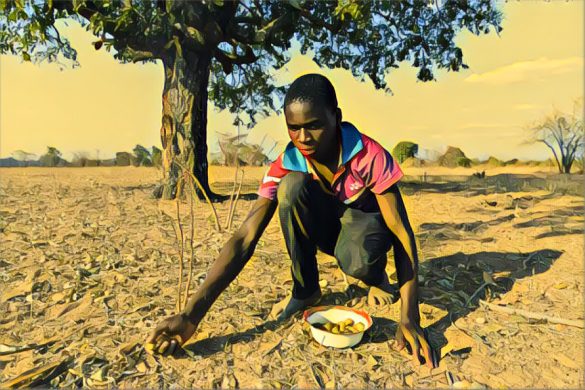Rural households in Zimbabwe are starting to feel the severe impact of El Niño, with the future looking increasingly bleak for agriculture and food security. El Niño, a climate pattern known for causing global heat increase and varied precipitation, typically emerges every two to seven years and can last up to 12 months.
Rudo Mtetwa, a 32-year-old from the Chipanga area in Chipinge, shared her struggles with the changing climate. “We’re struggling to harvest anything from our farms due to climate change. Now, we rely on working in nearby irrigation farms for survival, earning just US$2 per day,” she said.
The phenomenon, which is not new to Zimbabwe, often brings delayed and erratic rains, adversely affecting crops and livestock. Many farmers in rural communities, dependent on October rains for early crops, are finding current conditions extremely challenging.
According to a report by Newsday, El Niño’s impact is sinking communities deeper into poverty, with individuals like Mtetwa unable to afford schooling for their children and seeking land in irrigation schemes for sustenance.
Talent Mutamakira, from the same area, called on the government to support women in remote regions to mitigate El Niño’s effects. “We’re asking for help with funds to start income-generating projects like poultry. We also need land under irrigation schemes for horticulture,” she added.
According to the 2023 Zimbabwe Vulnerability Assessment Committee’s assessments, about 29% of the urban population (1.5 million people) and 19% of the rural population (1.9 million) are projected to face food insecurity, peaking at 26% (2.7 million people) in early 2024.
Zimbabwe has long struggled with climate change, leading to erratic rainfall and frequent droughts or floods. The upcoming 2023-24 El Niño event, expected to bring drier conditions, is likely to worsen the situation.
The National Oceanic and Atmospheric Administration predicts a strong El Niño between October 2023 and March 2024, with delayed rainfall and prolonged dry spells. This could drastically impact food production, leading to crop loss, livestock fatalities, and increased disease outbreaks.
The Meteorological Services Department (MSD) forecasts that southern regions of Zimbabwe, previously hit hard during the 2015/16 El Niño episode, will be most affected. These areas include Matabeleland North, South, Midlands, Masvingo, and Manicaland.
The report warns that these impending events pose a significant risk to Zimbabwe, potentially undoing progress in managing malnutrition. Under-nutrition contributes to nearly half of all deaths in children under five, exacerbating infections and illnesses.
Zimbabwe has endured various droughts, with the 2012 drought causing a 45% deficit in maize production and pushing 1.4 million Zimbabweans to the brink of famine. The recurrent droughts since 2002 have stagnated rural livelihoods, heavily reliant on agriculture.
With the country still recovering from COVID-19’s impact, an El Niño situation increases the risk of negative coping mechanisms affecting essential services like health, nutrition, and education.
Lands and Agriculture Minister Anxious Masuka recently emphasized the government’s focus on accelerating irrigation development and dam construction to counter El Niño’s impact. “We aim to climate-proof agriculture at both household and national levels,” Masuka stated.
Francesca Erdelman, WFP country director, highlighted the looming threat of climate change. “We’ll support communities to enhance climate-smart agricultural practices and access to water,” she said.
An agricultural expert, Charles Dhewa, noted that El Niño might force the government to shift resources from local production to food imports, potentially leading to corruption and politicization of food distribution.


